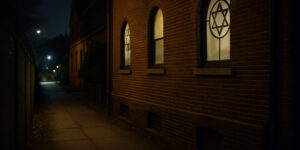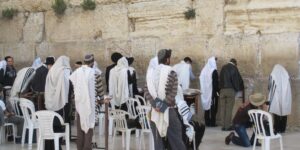Raoul Wallenberg: An Angel of Mercy for Jews
Safe Houses
With U.S. Defense Department finances, Wallenberg began renting properties. He rented 32 buildings around Budapest and declared them to be extraterritorial, protected by Swedish diplomatic immunity. Wallenberg knew that, again, the Nazis were overly impressed by official government emblems. So he put up intricately designed, official-looking signs on the buildings, such as “The Swedish Library” and “The Swedish Research Institute.” He hung oversized Swedish flags on the fronts of the buildings and put up shiny embossed government shields on the doors.
Apparently, 32 Swedish “libraries” were not suspect as long as they had well-crafted “official” signs on the entrances. The Nazis never discovered the plot. As Nazi troopers stormed house-to-house looking for Jews, word traveled fast on the well-oiled Jewish grapevine that all those new Swedish “libraries” in town were actually safe houses. Wallenberg’s buildings provided shelter for over 10,000 people. Some witnesses say three times that many were actually hidden in those safe houses.
Other neutral diplomatic missions in Budapest began to follow Wallenberg’s example by issuing Shutzpasses, and a number of diplomats from other countries were inspired to open their own safe houses for refugees.
Death Marches
Meanwhile, Eichmann began his brutal death marches. He carried out his promised deportation program by forcing large contingents of Jews to leave Hungary by foot. The first march began on November 20, 1944, and conditions along the 200-km (120-mile) route between Budapest and the Austrian border were so appalling that even some Nazis protested.
Thousands of Jews marched in endless columns, hungry, freezing and in great suffering. And thousands fell along the way.
It was during these marches that Wallenberg’s actions became legendary. Wallenberg stayed with them, continuously distributing Schutzpasses, food and medicine. He alternately threatened and bribed the Nazis until he managed to secure the release of those who had been given his Schutzpasses. Wallenberg was able to rescue some 17,000 Jews who were in the death marches.
The Trains to Auschwitz
When Eichmann again began shipping out the Hungarian Jews in whole trainloads, Wallenberg intensified his rescue actions. As the freight cars full of Jews stood in the station, he would even climb on top of them, run along the roofs of the cars and hand bundles of protective passports to their occupants. On one occasion, German soldiers were ordered to shoot him but were so impressed by Wallenberg’s courage that they deliberately aimed too high. He was then able to jump down, unharmed, and demand that those Jews who had received his Schutzpasses be allowed to leave the train and return to the city with him.
Threatening General Schmidthuber
Wallenberg searched desperately for suitable people who could be bribed, and he found a very powerful ally in Pál Szalay, a high-ranking officer in the Arrow Cross (the Nazi Hungarian police).
Two days before the victorious Russians arrived to take over Budapest, Wallenberg learned that Eichmann had set in motion a total massacre of the Jews living in Budapest’s larger ghetto. He knew the only person who could prevent it was General August Schmidthuber, commander of the German troops in Hungary.
Wallenberg’s ally Szalay, with a nice bribe, was sent to find Schmidthuber and hand him a note which declared that Wallenberg would make sure the general would be held personally responsible for the massacre and that Schmidthuber would be hanged as a war criminal after the war. The massacre was cancelled at the last minute as a result of Wallenberg’s intervention, saving an estimated 70,000 Jews.







































